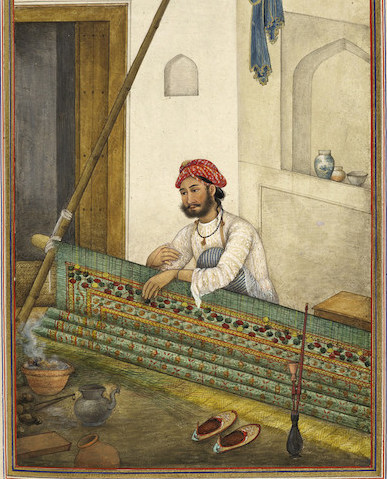Publish with Us!

How to submit your work
Get in touch! We consider as wide a variety of creative work and engagement as we can support. After an initial conversation, if we decide to go ahead, we will work with you to realize your work as close as possible to your particular vision.
The rest of this page discusses some of the nuts-and-bolts for how everything works.
File formats
We prefer simple text files, but this can be discussed. Text files should be in the Markdown format, any data files preferably should be in json or csv format. You may find this text template helpful; copy the text and paste it into a text editor. Edit as appropriate.
Submissions in Word doc format are acceptable, but please do not spend too much time on visually formatting the document, as all .doc files will be converted to plain text in order to generate this site.
Writing in markdown
The basics of Markdown are discussed here. At its core, a Markdown file is a minimally marked-up text file saved with the .md file extension. It uses # to denote headers (thus, ### is a third-level header), bold via two ** on each side of the word to be bolded, italics via one * on each side of the word to be italicized. (To see how easy it is to write in markdown, try this markdown tutorial.)
Lists can be denoted by using - marks at the start of each line, and blocktext can be denoted by using > at the start of a paragraph.
Links are made by wrapping the linked text with [ and ] and then placing the URL immediately following within ( and ), like so: [Google](http://google.com). A footnote can be indicated in the text with [^1]. At the end of the text, place the reference and use the same marker, [^1], at the start of the reference.
An image is inserted the same way as a link, but with ! in front, like so:  Please put your images in a folder and use your own surname in the folder and file names, eg graham-supporting-images\graham1.png.
Finally, code can be highlighted in the text by placing back-ticks, ` on either side. Code blocks can be indicated by using three backticks, and then the language, eg ```python , then the code, and then another three ticks on a new line underneath.
```python
python code here
Citation Style
Please use the Harvard author-date system. Reserve footnotes for technical asides. Link to any digital versions of any supporting texts. Have a final header level two 'Works Cited' and list any works cited at the end of your piece.
Please always provide links, if possible. Link to the DOI, or the most stable URL. If that is not possible, archive a copy of a page with the Internet Archive's 'Save Page Now' and link to that version.
Cover Images and Masthead Images
This particular site uses cover images for each article; these should be sized 450 px by 450 px. Masthead images should be sized 1300 px by 500 px.
The Reviewing Process & the Publishing of Responses
In the first instance, contact Shawn Graham (shawn dot graham at carleton dot ca) to discuss your potential submission, and to work out whether or not the idea is appropriate, any technical requirements, and suggestions for direction before you are formally invited to submit. In your initial email, please indicate your institutional affiliation (if any), your ORCID identifier or other pointers to your work/portfolio.
Pieces at this stage will be discussed by the Editorial Board for a decision on whether or not to move forward. If the decision is made to accept a submission, the Editor will invite at least two possible Respondents to review the piece. We will ask you to please consider under what kind of license you wish to release your work; the Creative Commons License Chooser tool may be helpful in this regard.
Authors may suggest appropriate Respondents for their piece, which the Board will take into consideration. Respondents will write (or otherwise craft) a Response that will be published under their own name. Creators will have the opportunity to write (or otherwise craft) a Riposte if they so wish.
Invited pieces will be put into our publication calendar.
Become a Respondent
We are also interested in hearing from individuals who might wish to become Respondents. Please email Shawn Graham (shawn dot graham at carleton dot ca) indicating in what capacity you feel you could engage with the materials on Epoiesen. Please indicate your institutional affiliation (if any), ORCID identifier or other pointers to your own work.
Copyright, Creative Commons, Copyleft:
Every author has the right to choose under what terms or license they wish to make their work public via this journal. We suggest that each article be made available with a creative commons attribution, share-alike license.
Masthead Image: British Library Flickr stream. 'A screen-maker, possibly of the Dumna caste.' Tashrih al-aqvam, an account of origins and occupations of some of the sects, castes and tribes of India https://www.flickr.com/photos/britishlibrary/12459538774/